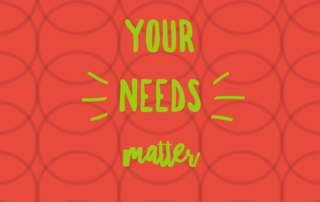Year in Review -13 Reflective Questions to set the tone for 2025
One of my family’s daily rituals is to check in by sharing our highs, lows, what we feel, what we need or want, and something we learned that day. This allows us to connect with each other, and brings awareness to what was most significant for us.
At the end of the year, we expand on that and reflect on what worked, what didn’t, what we want more of, less of, and what has to go in the coming year. This year, I added a few more prompts and I’m sharing those below.
The prompts are intended to invite deeper awareness so you can eliminate the things that drain you, and instead, focus on things you value most and what energizes you. You get to choose where you spend your precious time and energy. And only you can decide what stays and what goes.
On a call the other day, I was sharing this list of questions, and heard myself say that I wanted to think about what “gets my all” this year. Keep that in mind as you answer the questions about what gets your “all” this year.
There are 13 prompts to reflect on. I prefer handwriting my answers, but you can do whatever works for you. My daughter wrote her answers directly into her laptop when our family did this practice together on New Year’s Eve.
The practice:
- Grab a journal and a pen. Make yourself a cup of tea, coffee, or whatever you prefer. Put on your favorite music and comfy clothes and settle in to spend some time with yourself.
- If you want to invite others to do this with you, go for it!
- My family and I do this silently together, (meaning we don’t talk while doing it) with music in the background. Once we’re all complete, we take one prompt at a time and share our answers aloud with each other. It’s voluntary and connecting. Often, when one of us shares, another has some kind of realization around something they haven’t thought of for themselves.
- This practice invites deeper self-connection and reflection. It allows us to ponder where we’ve been, what we’ve accomplished, and allows us to touch on what we still long for. It also illuminates where we can be more conscious of how we’re using our precious time and energy as we move into the coming year. And within each moment.
- Because all we really have is this moment.
The timing:
- I like to do it until I feel complete, but if you prefer to use a timer, set it for 20-30 mins. If you want more time, just extend the timer. I enjoy flexibility so if I need more hot water and lemon, I get up to get it. Or if I must use the bathroom, I go. I also want space to explore what comes up in the moment without the pressure of time. So, for me, not using a timer allows me to stay more connected to my mind and body.
The prompts:
- What are your biggest celebrations this past year? What are you most excited about that you started, completed, or let go of?
- What’s your favorite memory from this past year? (can you connect to core values or needs it met?)
- What still feels unfinished, and what are you still craving?
- Where do you feel the weight of something you’re carrying — like anxiety, blame, the belief that you’re not good enough, obligations to others that you’ve outgrown, etc.? Think about what keeps you up at night.
- Imagine you were ready to let the weight of what you’re carrying go. If you were ready, what’s the first thing you’d do?
- What is the biggest hurdle you overcame this year? Or put another way, What did you accomplish this year that you didn’t think you could? What parts of you did you need to access to achieve what you wanted? (tenacity, courage, intentionality, etc.).
- What’s the best decision you made this year?
- What’s the biggest lesson you learned?
- What happened that you didn’t expect?
- What was your biggest disappointment or mourning?
- What’s something you integrated into your daily life that has kept you sane for this past year?
- What’s your biggest gratitude?
- What’s something you’d like to “give your all” to in the coming year?
As we move into 2025, let’s take up space together. Let’s allow ourselves to dream, imagine, think bigger than we think we can achieve, and just do the things we think we can’t.
Courage is doing what I think I can’t.
When mind chatter stops you from taking action, or reminds you how you didn’t quite measure up, gently turn DOWN the voice of your inner critic. Instead, remember your answers to these prompts, and turn UP the voice of your wise inner self and follow the passions and desires that light you up.
Here’s to living our lives focused on what matters most – in 2025 and beyond.
Interested in exploring coaching or just getting connected, simply send an email here!








